- About Us
- Schemes
- Culture Scheme Dashboard
- Scheme of Financial Assistance for Promotion of Art and Culture
- Financial Assistance to Cultural Organizations with National Presence
- Cultural Function and Production Grant(CFPG)
- Financial Assistance for Preservation and Development of Cultural Heriatge of the Himalayas
- Financial Assistance for Development of Buddhist/Tibetan Arts and Culture
- Financial Assistance for Cultural Activities in Performing Arts for Building Grants Including Studio Theatres
- Financial Assistance for Allied Cultural Activities
- Financial Assistance for Promotion of Guru-Shishya Parampara (Repertory grant)
- National Mission on Libraries
- Financial Assistance for Construction of Tagore Cultural Complexes(TCC)
- Scheme of Financial Assistance under Seva Bhoj Yojna
- Scheme of Scholarship and Fellowship for Promotion of Art and Culture
- Museum Grant Scheme
- Scheme for Financial Assistance for Veteran Artists
- Scheme for Promotion of Culture of Science (SPOCS)
- Scheme for Safeguarding the Intangible Cultural Heritage
- Global Engagement Scheme
- Indian Conservation Fellowship Program (ICFP)
- Centenary and Anniversary Celebrations Scheme
- Mission
- ICR
- Commemorations
- CSL
- G20 CWG
- Contact Us
Museums & Antiquities
Directory of Museums in India
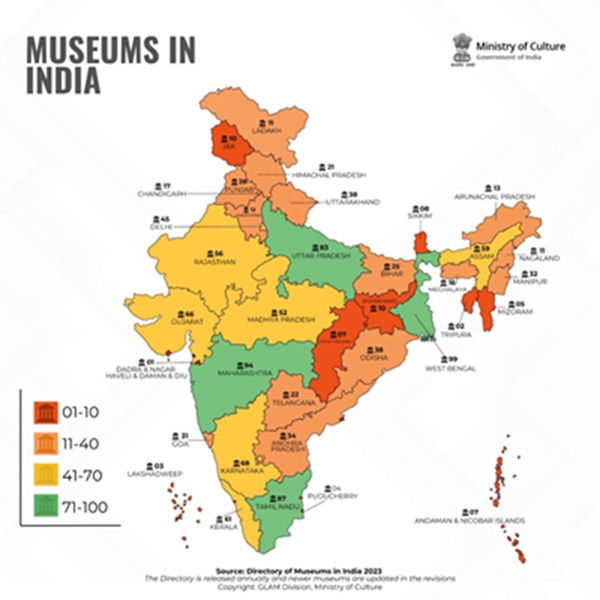
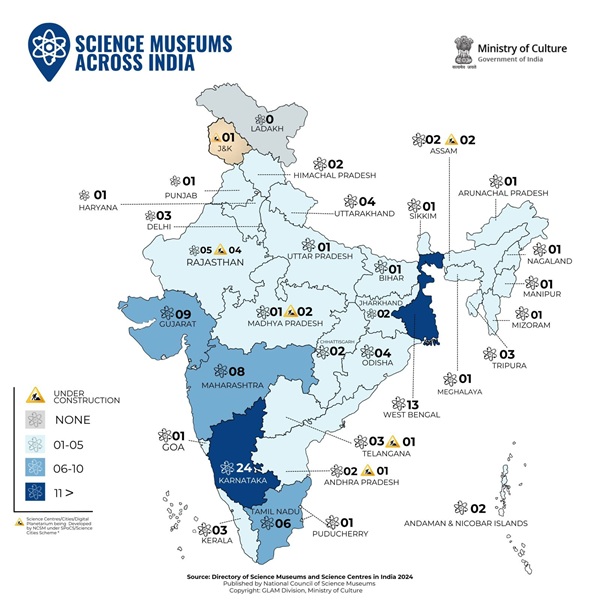
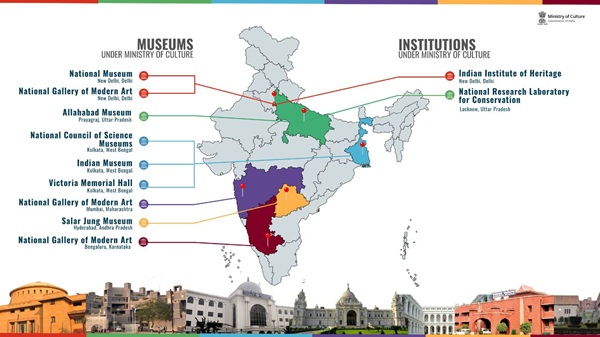
National Gallery of Modern Art, New Delhi
The National Gallery of Modern Art (NGMA), founded in 1954, is the only institution of its kind in the country representing evolution and pictorial transformation in visual arts over the last more than 150 years. NGMA functions as a subordinate office under the superintendence and administrative control of the Ministry of Culture.
The main objectives of the NGMA are to create an understanding and sensibility among the Indian public towards the visual and plastic arts in general and to promote the development of contemporary Indian art in particular. In 2009, NGMA inaugurated the opening of its New Extension Wing at New Delhi which increased its display spaces by more than 6 times.
For more information please visit http://www.ngmaindia.gov.in ![]()
Salar Jung Museum, Hyderabad
The Salar Jung Museum of Hyderabad is a repository of the artistic achievements of diverse European, Asian and Far Eastern countries of the world. The major portion of this collection was acquired by Nawab Mir Yousuf Ali Khan popularly known as Salar Jung III. The zeal for acquiring art objects continued as a family tradition for three generations of Salar Jungs. In 1914, Salar Jung III, after having relinquished the post of Prime Minister to H.E.H., the Nizam VII, Nawab Mir Osman Ali Khan, devoted rest of his entire life in collecting and enriching the treasures of art and literature till he lived. The precious and rare art objects collected by him for a period of over forty years, find place in the portals of the Salar Jung Museum, as rare to very rare pieces of art.
After the demise of Salar Jung-III, the vast collection of precious art objects and his Library which were housed in "Dewan-Deodi" the ancestral palace of the Salar Jungs, the desirability of organizing a Museum out of the Nawab's collection dawned quite soon and Sri M.K. Velodi, the then Chief Civil Administrator of the Hyderabad State approached Dr.James Cousins a well known art critic, to organize the various objects of art and curios which were lying scattered in different palaces of Salar Jung III to form a Museum.
With a view to perpetuate the name of Salar Jung as a world renowned art connoisseur, the Salar Jung Museum was brought in to existence and was opened to the public by Pandit Jawaharlal Nehru, the then Prime Minister of India on 16th December, 1951.
However, the administration of the Museum continued to be vested in the Salar Jung Estate Committee till 1958. Thereafter, the heirs of Salar Jung Bahadur graciously agreed to donate the entire collection to the Government of India through a Compromise Deed based on a High Court Decree on 26th December l958. The Museum continued to be administered directly by the Government of India till 1961. Through an Act of Parliament (Act of 26 of 1961) the Salar Jung Museum with its Library was declared to be an Institution of National Importance. The administration was entrusted to an Autonomous Board of Trustees with the Governor of Andhra Pradesh as its Ex-officio Chairman and ten other members representing the Government of India, the State of Andhra Pradesh, Osmania University and one from the family of Salar Jungs.
The Museum has a magnificent global collection of art objects and antiques not only of Indian origin, but mostly from countries Western, a sizable collection hails from Middle Eastern and Far Eastern origins. In 2000 AD, under museum expansion programme two more buildings were added on either side of existing central building.
Basing on the nature of collections, the Western /European collections were displayed in the Western Block and Eastern collections in the Eastern block. Mixed collection including Children's section, Rebecca, Musical clock, Jade, Ivory etc., galleries were located in the central building. A rich reference library which contains reference books, large collection of rare manuscripts etc. is also located the in the central building. Thus, this Museum has become popular, not only as a place of interest but also as an institution for education.
For more information please visit http://www.salarjungmuseum.in ![]()
Victoria Memorial Hall, Kolkata
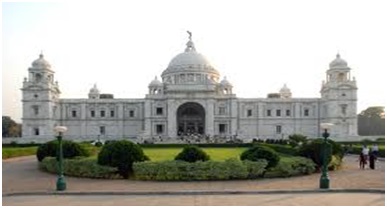
The Victoria Memorial Hall (VMH), Kolkata, was founded principally through the efforts of Viceroy Lord Curzon, as a period museum in memory of Queen Victoria. Its foundation stone was laid in 1906 and the 57-acre campus was formally opened to the public in 1921. The VMH was declared an institution of National importance by the Government of India Act of 1935. The VMH’s objective is to be the premier period museum in the world on Indo-British history in the eighteenth, nineteenth and twentieth centuries. On a local level, it seeks to function as the premier museum, art gallery, research library, and cultural space in the city of Kolkata. It has been widely hailed as the finest specimen of Indo-British architecture in India, and called the ‘Taj of the Raj’. The VMH is currently the most-visited museum in India and one of the top museums in the world in terms of footfall. It’s rapidly rising global stature as a top tourist destination in India is indicated by the award of a Tripadvisor Certificate of Excellence in 2015, and of Lonely Planet ‘Top Choice’ and ‘Fodor’s ratings, accolades coveted by most museums of the world.
The VMH collection has 28,394 artefacts, many of which are displayed in nine galleries that showcase historic paintings in oil and watercolour, sketches and drawings, aquatints, lithographs, photographs, rare books and manuscripts, stamps and postal stationery, coins and medals, arms and armour, sculptures, costumes, personal relics. Etc
Holidays
The museums is closed on all Mondays and national holidays.
Working hours
From 10.00 A.M. to 5.00 P.M. without interruption.
Address: Victoria Memorial Hall, 1, Queen’s Way, Kolkata, 700071
Mail : victomem@gmail.com
Website: indianmuseumkolkata.org ![]()
Face book: indianmuseumkolkata.org ![]()
Twitter: indianmuseumkolkata.org ![]()
National Council of Science Museums (NCSM)
National Council of Science Museums (NCSM), an autonomous organization under the Ministry of Culture, Government of India is engaged in developing a Culture of Science and innovation through its nationwide network of science museums/centers. NCSM is the implementing agency for the Scheme for Promotion of Culture of Science (SPoCS) of the Ministry of Culture, Government of India. Under this scheme, it establishes science cities, science centers, and Innovation Hubs to provide a platform to nurture creativity and innovation, especially among young individuals. NCSM is also engaged in organising various science and technology (S&T) awareness programs throughout India, effectively communicating scientific knowledge and empowering people. To reach out to the rural populace, across the country, NCSM conducts Mobile Science Exhibition (MSE) through its fleet of 48 buses. Notably, NCSM's Mobile Science Exhibition program holds the distinction of being the largest and longest-running non-formal science education program in the country, as recognized by the Limca Book of Records. Some of the major activities of NCSM include National Science Seminar, National Science Drama Festival and Science & Engineering Fairs. Through these diverse initiatives, NCSM serves and empowers different sections of society. Additionally, NCSM also supports like-minded organizations by developing state-of-the-art galleries, exhibitions, and other facilities.
Holidays
The Science Centers under NCSM are closed only on two holidays (Holi and Diwali).
Working hours
From 09.30 A.M. to 06.00 P.M. without interruption.
Address: National Council of Science Museums 33, Block-GN, Sector V, Bidhan Nagar, Kolkata, West Bengal - 700091
Mail : sciencecentre@ncsm.gov.in
Website: https://ncsm.gov.in/![]()
Face book: https://www.facebook.com/ncsmgoi ![]()
Twitter: https://twitter.com/ncsmgoi![]()
Youtube: https://www.youtube.com/@ncsmgoi/ ![]()
Instagram: https://www.instagram.com/ncsm_goi/![]()
Allahabad Museum, Allahabad
Location:
The Allahabad Museum is centrally located in the Civil Lines area of the city in a lush green thickly forested historic park called Chandrasekhar Azad Park. It is about 3 kms from the Allahabad Railway Station with almost equidistant from Prayag and Rambagh Railway Stations and about 12 km from Bamrauli Airport.
History
In 1863, the Board of Revenue requested the Government of North-Western Provinces for the establishment of a public library and a museum. With donations from the provincial government, the famous Orientalist Sir William Muir and the Maharaja of Vijaynagaram, a superintendent of library and museum was appointed and an ornate building was inaugurated in 1878 to house the collection. For unforeseen reasons the museum closed down in 1881. The initiative to reopen the museum was taken by Pandit Jawaharlal Nehru, the President of the Allahabad Municipal Board in 1923-24. Under the operational direction of Pandit Brij Mohan Vyas, the then Executive Officer of the board, a museum was opened in the Municipal Building in 1931. Under the tutelage of pandit Vyas, the musum acquired important collections, including ancient sculpture from Bharhut ( Satna district of MP) and Bhumra (MP). In 1942, S.C. Kala the first curator gave the much needed impetus to enriching the collections of the museum, especially adding the Nehru personalia Collection and the Bengal School Paintings. As space became a constraint, it was decided that the museum should be shifted from the Municipal Board building to the present building at the Company bagh or Chandrasekhar Azad park. The foundation stone of the present museum building which was then called as Prayag Sangrahalaya was laid on 14th December 1947 by Pandit Jawaharlal Nehru and the museum was opened to the public in 1954.
There are sixteen galleries in Allahabad Museum. It houses a variety of collections those include Stone Sculptures, Terracottas, Miniature Paintings, Modern Painting, Archaeological objects, Coins, Arms and Armour, Textile, Manuscript, Farmans etc.
The sculptural art collection comprising of an abacus of an Ashokan pillar (3rd century BCE), 58 fragments of sculpture from the Bharhut stupa (2nd century BCE) including scenes from the Jataka stories, pillars, crossbars and coping stones are displayed in the Early Sculpture Gallery. The Medieval sculpture section is still more nice and varied, displaying the Vaisnava, Satka, Saiva and Jaina images. It has also a rich collection of Miniature Paintings and Modern Art. The Miniature Paintings belongs to the of Rajasthani, Pahari, Mughal and Company schools of paintings. Paintings of Anagarika Govinda and those of the Russian artists Nicholas and Svetoslav Roerich occupy a pride of place in the Modern Art Gallery. The Bengal School collection comprises the works of Asit Kumar Haldar, Abanindranath Tagore, Gaganendranath Tagore, Nandalal Bose, Jamini Roy and Sudhir Ranjan Khastgir are the exquisite collection of Allahabad Museum. The Museum has an important personalia collection of manuscripts and letters of literary luminaries like Sumitranandan Pant, Mahadevi Verma, Suryakant Tripathi ‘Nirala’, Maithili Saran Gupta, Ram Kumar Verma and others. The Arms and Armour Collection of the Allahabad Museum has unique pistols, rifles, guns, swords and body armour from the 18th century to 19th century CE. The textiles and decorative arts collection includes fine gold Zari work and exquisite wooden artifacts.
Galleries of Allahabad Museum:
- Introductory Gallery
- Archaeological Gallery/Rock Art Gallery
- Terracotta Gallery
- Early Sculpture Gallery
- Medieval Sculpture Gallery
- Miniature Painting Gallery
- Literary Gallery
- Natural History Gallery
- Gandhi Gallery
- Nehru Gallery
- Decorative Art Gallery
- Arms, Armours and Bronze Gallery
- Textile Gallery
- Modern Indian Painting Gallery
- Freedom Struggle Gallery
Publications:
Museum has published number of Books, Catalogues, and Seminar proceedings in order to encourage research. It has also printed picture postcards, guide books and prints for the visitors to take them as souvenirs from the museum.
Facilities for Visitors:
- Guided gallery tours on prior intimation.
- Museum organise many activities and events such as Lectures, Seminars, Exhibition, other Educational Activities & events.
- Souvenirs Counter: Publications, Plaster cast & Fiberglass replicas of stone and terracotta objects and other Souvenirs are sold at here.
- Library for researchers and students.
- Open on all days except Monday and Sunday following second Saturday & Government of India Gazetted Holidays.
- Timings: 10:00 am to 5:00 pm. Entry fees Rs. 15/- for adult and Rs. 5/- per child.
- Ticket Counter Closes at 4.30 pm.
- Photography is allowed on payment.
Important Activities:
- Conducting the Capacity Buidling programme for museums curators
- Conducting workshops on conservation and preservation
- Organisaing Memorial Lectures, National and Internatioaanl;a Seminars and Conferences
- Exploration and Research
- Augmentation of Artifacts and Art objects
- Exhibitions
- Outreach programmes for children,students and for communities
- Monsoon Festival, Vasanta Utsav and Sarad Utsav.
- Heritage Walk & Road Show
- Foundation Day
- Children Week
- International Museum day, Environment Day and other important days as post of its Calendar year of program of activities.
Website: theallahabadmuseum.com ![]() and allahabadmuseum.org
and allahabadmuseum.org![]()
Email- ID:allahabadmuseum@rediffmail.com
Telephone No.: 0532-2408237
Fax.: 2407834
For more information please visit theallahabadmuseum.com
National Research Laboratory for conservation of Cultural Property Lucknow
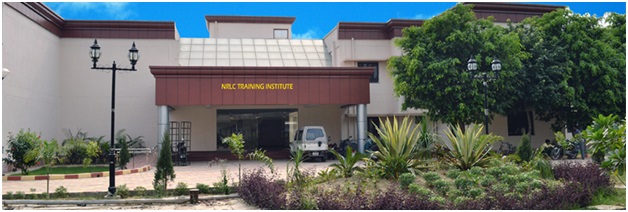
National Research Laboratory for Conservation of Cultural Property (NRLC), a subordinate office of Ministry of Culture, Govt. of India established in 1976 and later recognized as a scientific institution by the Ministry of Science and Technology. The organization has a Regional Laboratory at Mysore and Training Institute at Jankipuram, Lucknow besides the headquarter campus.
Since its inception, the laboratory has been engaged in scientific research, training, technical assistance to museum, archives, archaeological departments and other institutes, documentation, and dissemination of information through publications, conferences, workshops, seminars at international and national level. The laboratories endeavors are designed to serve the needs of the conservation profession by undertaking work that tackles the significant conservation problems. The laboratory develops the methods, materials and tools for conservation and shares its experience with organizations worldwide.
Address: National Research Laboratory for Conservation of Cultural Property (NRLC), Sector-E/3, Aliganj, Lucknow-226024
Mail : directornrlclucknow@gmail.com, dg.nrlc@gov.in
Website: indianmuseumkolkata.org ![]()
National Museum, New Delhi
National Museum is a Subordinate Office of the Ministry of Culture, Govt. of India. Set up in 1949, the Museum possesses more than 2 lakhs artifacts. The main objectives of the National Museum are as given under:
- To collect antiquities and art objects of Historical, Cultural and Artistic significance for the purpose of their protection and interpretation (research).
- To disseminate knowledge about the significance of the objects in respect of history, culture and artistic excellence and achievements.
- To serve as a cultural centre for enjoyment and interaction of the people in and around artistic and cultural activity.
- To serve as epitome of national identity.
For more information please visit www.nationalmuseumindia.gov.in ![]()
National Museum Institute of History of Art, Conservation& Museology New Delhi
The National Museum Institute (NMI), an autonomous organization fully funded by the Ministry of Culture was established as a Society in January 1989 and declared a Deemed to be University in April 1989. This is the only University in India, exclusively devoted to the subjects related to museums. It is presently functioning in the premises of the National Museum at Janpath, New Delhi. Hon’ble Minister for Culture is the Chairperson of the Society and also the Chancellor of the University. The Director General, National Museum is the ex-officio Vice-Chancellor of the Institute.The main objectives of the Institute are as follows:
- To provide courses of study, training and research in different fields of History of Art, Conservation and Museology.
- To provide and offer facilities for fundamental research in the above fields of study.
- To collaborate with other national institutions dealing with the cultural property in order to share the material, curatorial/technical expertise and facilities.
- To interact on a continuous basis at the national level to improve standards of teaching in the above fields.
In pursuance to the above objects, NMI offers M.A. and Ph. D courses in History of Art, Conservation and Museology; conducts three months certificate courses (short term courses) namely India: Art & Culture and Art Appreciation in English and Bhartiya Kalanidhi in Hindi; holds national and international seminars, workshops and symposia and arranges special lectures of eminent scholars on topics of relevance; and publishes its works. In the 10th Convocation of NMI held on 3rd June 2013, degrees to the successful MA/Ph.D students were conferred by the Hon’ble Minister of Culture.
For more information please visit nmi.gov.in/ ![]()
Indian Museum, Kolkata
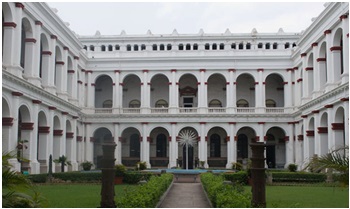
The Indian Museum, Kolkata is the oldest Museum in the Asia Pacific region of the world. It was established on February 2, 1814 under the guidance of Dr. Nathaniel Wallich at the Asiatic Society. It was earlier known as Asiatic Museum and Imperial Museum. In 1866 its governance was transferred to the Trustees of the Indian Museum under Indian Museum Act no. XVII of 1866. The foundation of the present Victorian edifice was laid in 1867 and completed in 1875, with W.L. Granville as architect. On April, 1878 the Museum was opened to the public at the present building on Chowringhee Road, overlooking the Kolkata Maidan. The current administration of the Indian Museum is in accordance with the Indian Museum Act, 1910, as amended from time to time. The Chairman of the Board of Trustees on the Indian Museum is His Excellency the Governor of West Bengal. Indian Museum, Kolkata is a repository of 1,06,115 objects relating to Archaeology, Numismatic & Epigraphy and Anthropology.
Holidays
The museums is closed on all Mondays and national holidays.
Working hours
From 10.00 A.M. to 5.00 P.M. without interruption.
Address: Indian Museum, 27, Jawaharlal Nehru Road, Kolkata, West Bengal – 700016
Mail : indianmuseumkolkata@gmail.com, directorindianmuseum@gmail.com
Website: indianmuseumkolkata.org ![]()
Face book: indianmuseumkolkata.org ![]()








